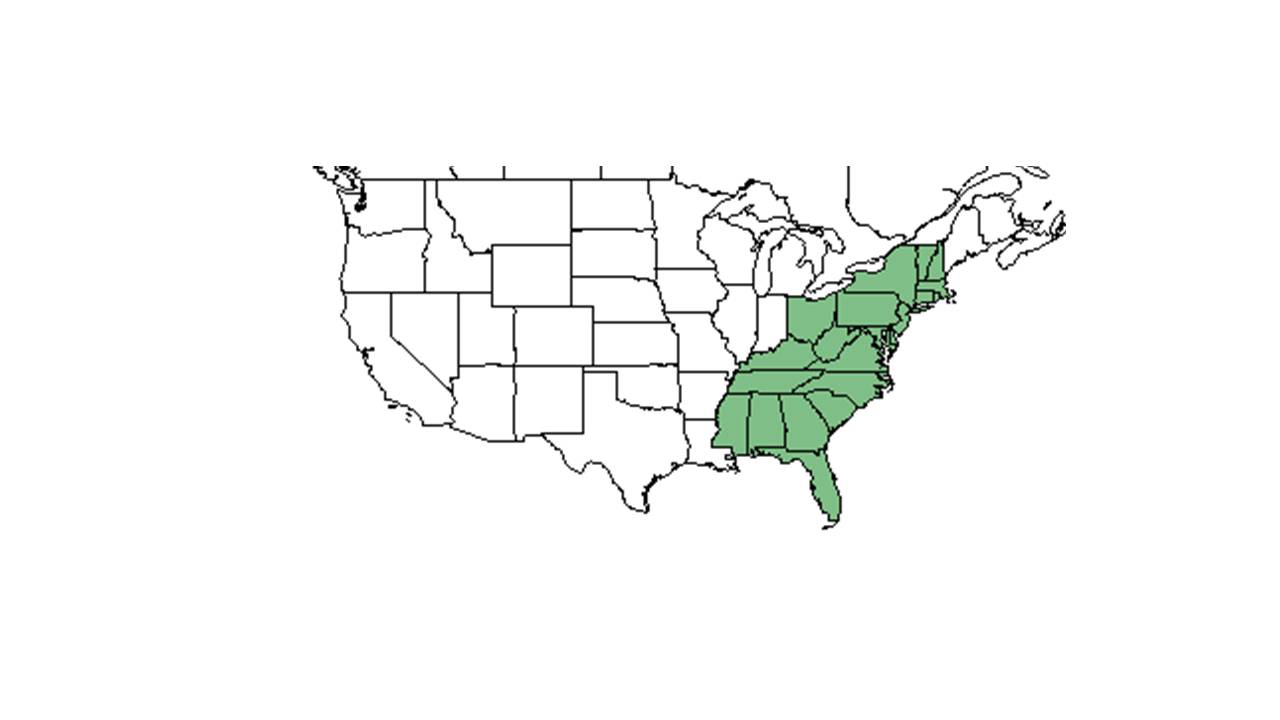Nabalus serpentarius
| Nabalus serpentarius | |
|---|---|

| |
| Photo by John R. Gwaltney, Southeastern Flora.com | |
| Scientific classification | |
| Kingdom: | Plantae |
| Division: | Magnoliophyta – Flowering plants |
| Class: | Magnoliopsida – Dicotyledons |
| Order: | Asterales |
| Family: | Asteraceae ⁄ Compositae |
| Genus: | Nabalus |
| Species: | N. serpentarius |
| Binomial name | |
| Nabalus serpentarius Pursh | |

| |
| Natural range of Nabalus serpentarius from USDA NRCS Plants Database. | |
Common names: cankerweed, lion's-foot, gall-of-the-earth[1]
Contents
Taxonomic notes
Synonyms: Nabalus serpentaria (Pursh) Hooker; Prenanthes serpentaria Pursh; Nabalus serpentarius (Pursh) Hooker[1]
Varieties: Nabalus serpentarius (Pursh) Hooker[1]
Description
A description of Nabalus serpentarius is provided in The Flora of North America.
The inflorescence of this species is corymbiform to paniculiform, with 4-19 flowers per head. The flowers have 4-10 phyllaries that are sparsely setose and pubescent with long, coarse hairs. Its branches are well-developed and the principle leaves are evidently lobed.[1]
Distribution
This plant ranges from Massachusetts to Georgia, Panhandle Florida, and Mississippi.[1]
Ecology
Habitat
In the Coastal Plain in Florida and Georgia, N. serpentarius can be found in longleaf pine-wiregrass flatwoods, beech magnolia woods, rich loam on steep slopes of wooded sinkhole ravines, rich mesic woodlands of shallow ravines, wooded ravine bottoms, dry woods, clay hillsides, clay loam in open stands, mixed pine-hardwood stands, open pine-oak woodlands, hardwood forest bluffs, drying loamy sand along mesic woodlands with limestone outcrops, subxeric woodlands on slopes of rivers, and frequently burned mature longleaf pine-wiregrass community.[2] It can also be found along sidewalks.
Phenology
N. serpentarius flowers from August through October.[1]
Fire ecology
Populations of Nabalus serpentarius have been known to persist through repeated annual burning.[3]
Conservation, cultivation, and restoration
Cultural use
Photo Gallery
References and notes
- ↑ 1.0 1.1 1.2 1.3 1.4 1.5 Weakley, A.S. 2020. Flora of the Southeastern United States. Edition of 20 October 2020. University of North Carolina at Chapel Hill, Chapel Hill, North Carolina. Cite error: Invalid
<ref>tag; name "weakley" defined multiple times with different content Cite error: Invalid<ref>tag; name "weakley" defined multiple times with different content Cite error: Invalid<ref>tag; name "weakley" defined multiple times with different content - ↑ Florida State University Robert K. Godfrey Herbarium database. URL: http://herbarium.bio.fsu.edu. Last accessed: July 2015. Collectors: James R. Burkhalter, Loran C. Anderson, P. L. Redfearn, Robert K. Godfrey, R. S. Mitchell, Robert Kral, Rodie White. States and Counties: Florida: Escambia, Gadsden, Jackson, Jefferson, Leon, Liberty, Okaloosa, Santa Rosa, Wakulla, Washington. Georgia: Grady, Thomas. Compiled by Tall Timbers Research Station and Land Conservancy.
- ↑ Platt, W.J., R. Carter, G. Nelson, W. Baker, S. Hermann, J. Kane, L. Anderson, M. Smith, K. Robertson. 2021. Unpublished species list of Wade Tract old-growth longleaf pine savanna, Thomasville, Georgia.